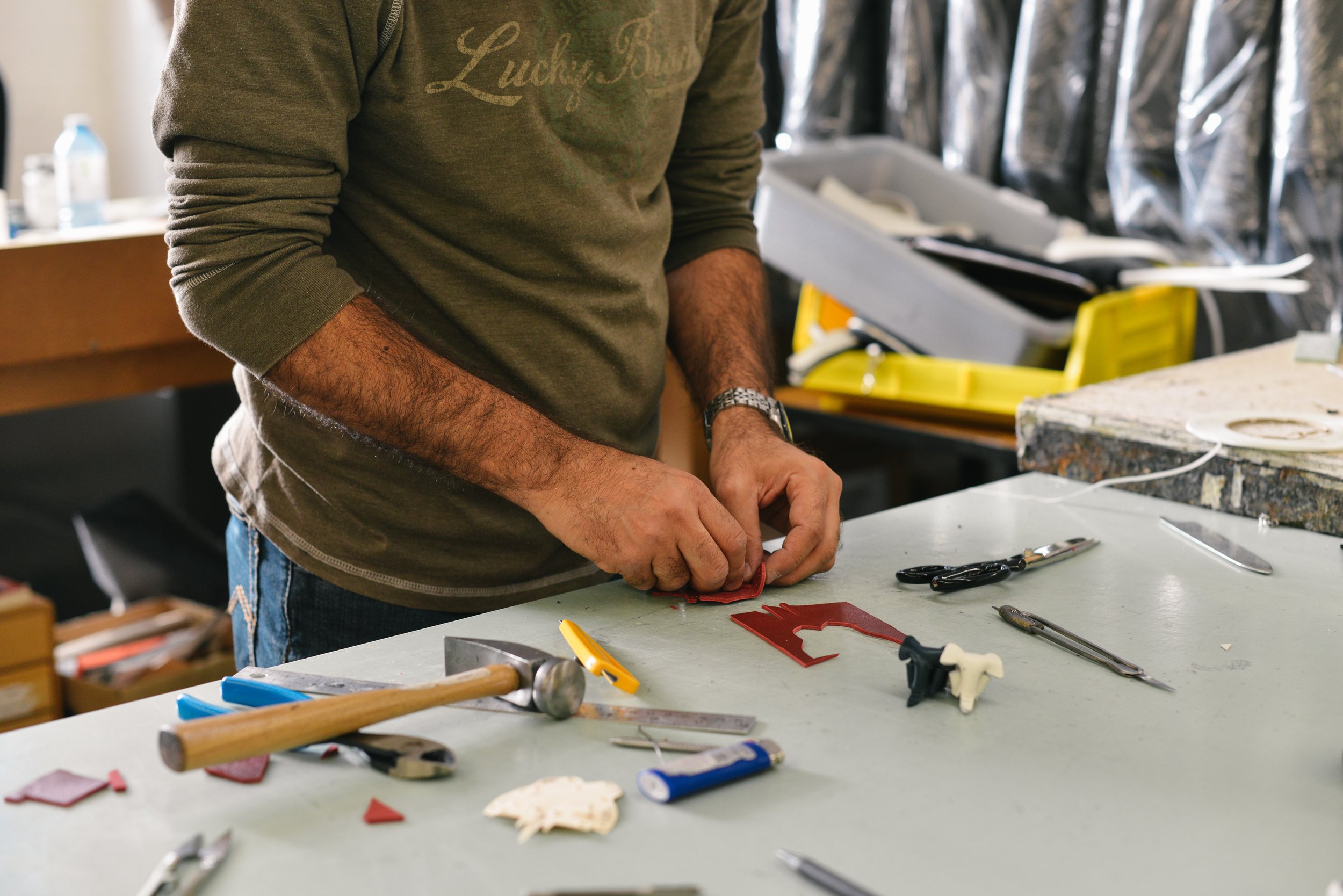How I create a tech pack for your fashion design
If you've read my previous posts on tech packs, you'll know how essential they are + why it's so important for you to have them in your fashion range. If you've not seen those articles + aren't sure what a tech pack is exactly, you can read the posts here. This post covers decisions that are made in order to create the tech pack + why it's important for clients to provide as much information on their customer as possible.
A lot of clients come to me with only a design + don't have any preference on fabrics, trims + techniques, so I ask a few questions in order to establish what they are trying to achieve. This helps me to tailor the techniques + components to suit their brand. Of course, if client's come to me with their own ideas, I'm happy to work around those.
So what considerations are there?
What is the retail price range?
You're probably bored of hearing me say this, but I like to be realistic + treat fashion as a business. It's lovely just making what you want, but in the real world you're unlikely to last long with this approach. In fact, clients who don't treat their range as a business are more often than not the ones who's business experiences financial problems.
When I'm given a price range, I can then tailor fabrics, trims + techniques to suit this. For example, I'm not going to suggest silk for a range that retails at £30 as this will be out of budget. For expensive ranges, these need to have high quality finishes, such as neat seams without any raw edges visible (even inside), lining + beautiful fabrics - a cheaper range wouldn't be able to afford these. Another part of the tech pack that's affected by the price is the tolerance (the amount of different you're willing to accept between what you've requested + what the factory have made). If you're at a cheaper price point, + therefore cost price, the factory will be less likely to allow small tolerances. Whereas, expensive ranges will be paying a premium + therefore the tolerance will be minimal.
Who is the customer?
Again, something you've probably heard me say hundreds of times, but it's so important! For example, something key on the tech pack is the measurements. The factory will base the first sample on these measurements + of course the fit process will allow the client to perfect the fit over several sessions (related post; ultimate guide to fit sessions), but, the more information I have on the client to begin with, the better the first sample will be + the less changes you have to make. Let's take an example, if I know the customer prefers loose fit styles, I can create the measurements accordingly. If the customer is based in China, I know that statistically the measurements will be smaller than someone in the US, for example, + I can create the measurements relate to them. The measurements also control the styling, so it's good to know if your customers have any preference of sleeve length, how low the neckline is, etc + I can work accordingly. Although garment measurements aren't an exact science (you can learn more about the irregularities in sizing here), information on customer preferences helps to get the best possible results for your first fit sample.
What is the fabric?
As I mentioned earlier, I can make suggestions if the client hasn't selected a fabric already. I can suggest a fibre composition + finish as relevant + ask the factory to send options for the clients selection, so they can check the quality before purchasing the fabric. When making the tech pack, I consider the fabric type + how this will effect the techniques used. Most commonly, I look at stretch fabrics vs non-stretch fabrics, as the type of stitch used is very important + is different for both fabric types. On stretch fabrics, the stitches must be compatible with the stretch, otherwise the stitches will rip + a hole will be created.
What is the size range?
If the size range is small, for example size small, medium + large, usually there's only a need for one set of grade rules is required (the amount of difference between each size at each point of measure - you can download a quick reference glossary of terms below if you'd like). However, for a larger size range, perhaps size 6-18, 2 sets of grade rules would usually work best. Therefore, it's good for clients to make a decision upfront on what sizes they will be making, so the grade rules can be written accordingly.
Hopefully this post has helped you to understand more about what goes into a tech pack + how I tailor my service specifically to you. If you'd like to learn more about how I can help you, you can either view my list of services by clicking here, or get in touch via this link for more information..
There's lots more free fashion industry information coming up on the blog, including mistakes to avoid when you're starting a fashion label + the first steps to take when starting a new business. I welcome suggestions for future blog posts, so please feel free to ask for a particular topic in the comments below....
I hate spam too - if you sign up to this email list, your details won't be sold or leased to anyone else. I will email you from time to time with helpful content and occasional offers, which you can unsubscribe from at any time.















This Womenswear trend is inspired by the Wild West, but levelled up to a high end finish….